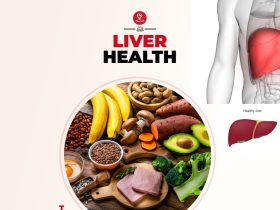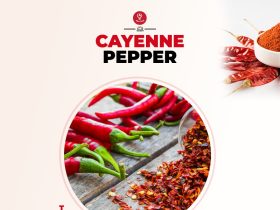
High-sugar foods and drinks are often high in calories and can contribute to weight gain or obesity when consumed in excess. Sugary foods are often low in nutrients and don’t provide a feeling of fullness, leading to overeating.
There may be hidden sugars added to foods and beverages but may not be immediately apparent. They can be found in various processed and packaged foods, even those that may not taste particularly sweet. This includes flavored yogurts, condiments and sauces, Protein bars, Ketchup, packaged snacks, and beverages. Read on for foods and drinks that are high in hidden added sugars.
Consuming too much sugar has been linked to an increased risk of developing chronic conditions such as type 2 diabetes, heart disease, and certain types of cancer. Excessive sugar intake can lead to insulin resistance, a condition where the body becomes less responsive to insulin, which is a hormone that regulates blood sugar levels.
So to maintain a healthy diet, it’s important to limit your consumption of added sugars, which are sugars added to foods and drinks during processing or preparation.
The American Heart Association (AHA) suggests the following limits for added sugar intake:
- For women: No more than 25 grams (6 teaspoons) of added sugars per day.
- For men: No more than 36 grams (9 teaspoons) of added sugars per day.
Instead of high-sugar foods, focus on a balanced diet that includes plenty of fruits, vegetables, whole grains, lean proteins, and healthy fats.
Below are some of the foods and drinks with hidden sugar that may contain more sugar than you’d think.
High-Sugar Foods To Keep Out Of Your Diets
Several foods are commonly associated with contributing the most free sugars to one’s diet. These foods tend to be high in added sugars and are often added sugars aren’t a necessary part of your diet. Here are some examples of foods that may add the most free sugars to your diet.
Breakfast cereal
breakfast cereals can be highly nutritious. However, not all cereals are created equal.
Like many other low-carb products, low-carb breakfast cereals often contain added sugar to enhance their flavor.
For example, Low-sugar cereals contain typically contain less than 7 grams (1 teaspoon) of sugar per serving. Some examples include plain bran flakes, shredded wheat, or unsweetened puffed grains. This is more than the daily limit for men and women.
The amount of sugar in breakfast cereals can vary widely depending on the brand, type, and specific flavor of the cereal. Some cereals are specifically marketed as low-sugar or no-added-sugar options, while others may contain significant amounts of added sugars. To determine the exact sugar content of a particular cereal, it’s best to check the nutrition label on the packaging.
Low-fat yogurt
As a general guideline, plain or unsweetened low-fat yogurt typically contains natural sugars from lactose, the naturally occurring sugar in dairy products. On average, plain low-fat yogurt can have around 6-12 grams of sugar per serving, which comes from naturally occurring lactose.
On the other hand, flavored low-fat yogurts can have higher sugar content due to the addition of sweeteners. The sugar content in flavored yogurts can range from 10 to 25 grams or more per serving, depending on the brand and flavor.
Ketchup
Ketchup is a condiment commonly used to add flavor to various dishes, but it can also contain hidden sugars.
Many commercial brands of ketchup contain added sugars to enhance taste and balance the acidity of tomatoes. These added sugars can include high fructose corn syrup, or regular table sugar (sucrose). The amount of added sugars can vary between brands and may contribute to the overall sugar content of the product.
Soft drinks and sodas
Regular soft drinks and sodas are notorious for their high sugar content. They often contain large amounts of added sugars and provide little to no nutritional value.
Ice cream and frozen desserts
Ice cream, frozen yogurt, sherbet, and other frozen treats are typically high in added sugars and often contain additional flavorings and toppings that contribute to sugar content.
Canned fruit and fruit juice
Canned fruit can contain natural sugars that come from the fruit itself. When fruits are canned, they are typically preserved in their own juices or with light syrup. Canned fruits are preserved to extend their shelf life.
Fruit juice, while it can provide some nutritional benefits or contains some vitamins and minerals, can also be high in sugars. They naturally contain sugars, primarily fructose, which is the natural sugar found in fruits.
Some commercial fruit juices, especially those that are processed or marketed as fruit drinks, can have added sugars to enhance sweetness or extend shelf life. These added sugars can include various forms of sugar or sweeteners like high fructose corn syrup or cane sugar. It’s important to read the ingredient list to identify any added sugars in the product.
Granola
Granola is a breakfast or snack food that typically consists of a mixture of rolled oats, nuts, seeds, and sweeteners. It offers a combination of fiber, protein, healthy fats, and carbohydrates.
Granolas have added sugars to enhance the taste and provide sweetness. These added sugars can include various forms of sugar, such as cane sugar, honey, maple syrup, agave syrup, or molasses. The amount of added sugars can vary significantly between different brands and flavors.
Protein bars
Protein bars are a type of nutritional supplement that provides a convenient and portable source of protein. They usually contain a combination of protein, carbohydrates, fats, and various other ingredients.
When it comes to sugar content, protein bars can range from low-sugar options to those with higher sugar content. some protein bars may contain higher sugar content. Certain flavors, particularly those that include chocolate coatings, caramel, or added fruits, may have a higher sugar content to enhance taste and improve palatability. These bars can have anywhere from 5 to 20 grams or more of sugar per serving.
Premade smoothies and soup
Generally, premade smoothies and soups can contain added sugars to enhance the taste. However, some products may rely solely on the natural sugars present in the fruits or vegetables used.
You can also consider making your own smoothies and soups at home using fresh ingredients. This way, you have more control over the sugar content and can customize the recipes to suit your preferences and dietary needs.
Conclusion
High-sugar foods can have detrimental effects on individuals with diabetes. They often lack essential nutrients, displacing healthier options in the diet For those living with diabetes, managing blood sugar levels is crucial for overall health and well-being.
High-sugar foods can also contribute to weight gain, obesity, and an increased risk of developing type 2 diabetes.
RELATED ARTICLES
Sep 24, 2024
The Ultimate Guide to Foods That Support Liver Health
A balanced diet that includes nutrient-rich foods and avoids fried or highly salty foods is extremely helpful in maintaining liver[...]
Sep 11, 2024
Cayenne Pepper: A Spice with Surprising Health Benefits
Cayenne pepper has been used for medicinal purposes for centuries, and it has been extremely important not only as a[...]
Sep 06, 2024
Okra Water: The Surprising Super Drink You Didn’t Know!
The wellness world has always been full of questionable and bizarre trends, and the rise of TikTok has only spread[...]
RECENT POSTS
Disclaimer
The content is purely informative and educational in nature and should not be construed as medical advice. Please use the content only in consultation with an appropriate certified medical or healthcare professional







